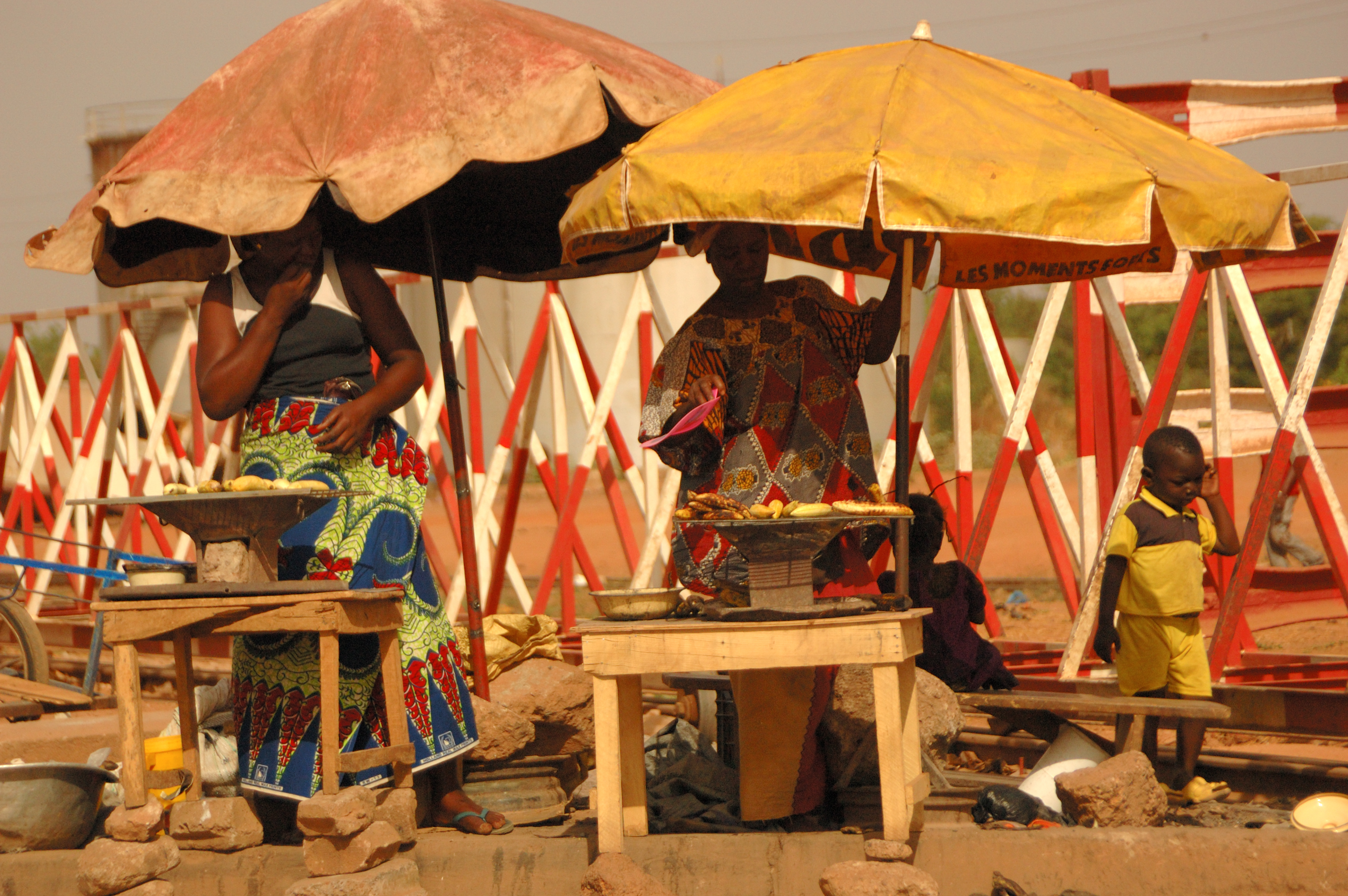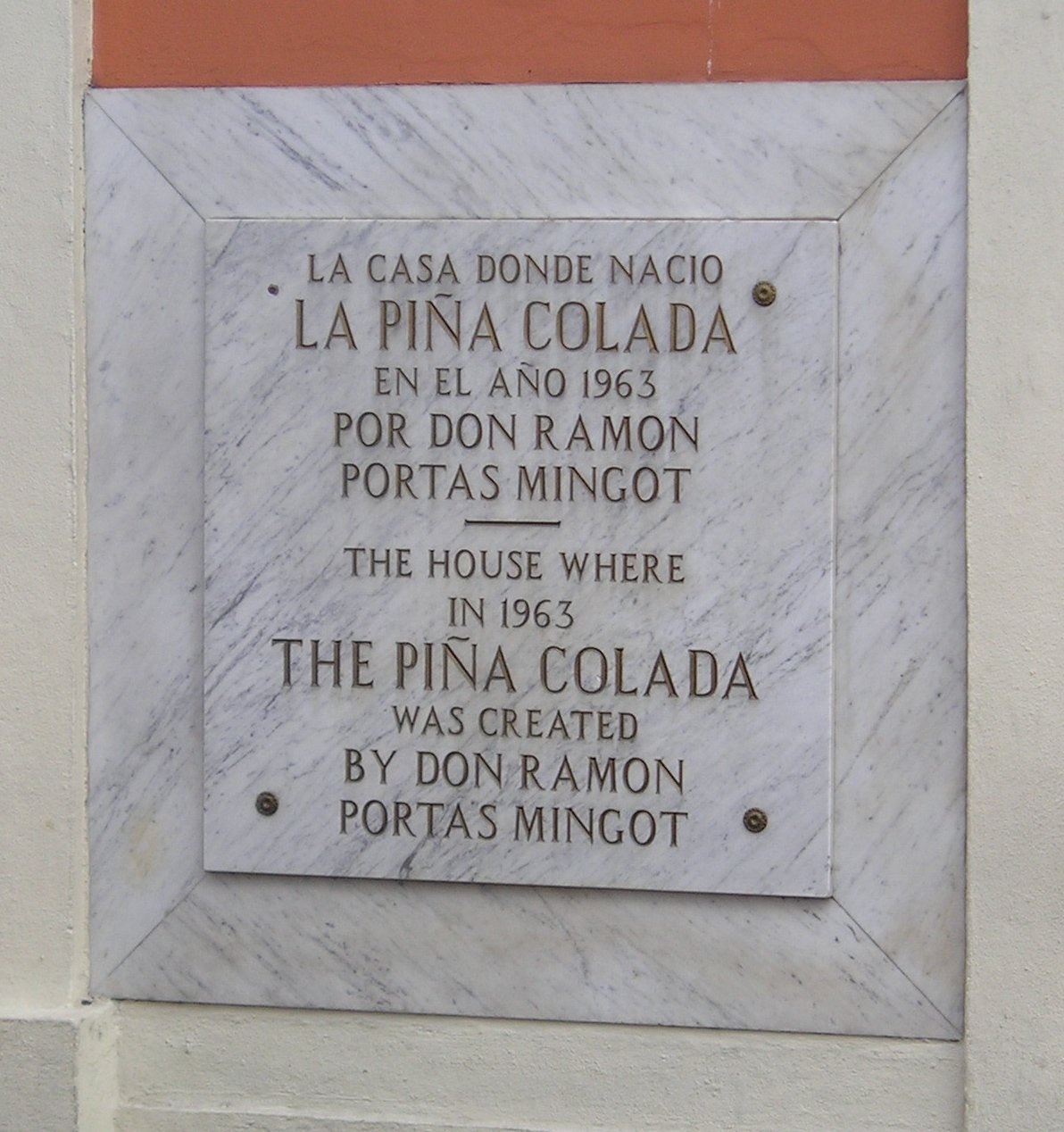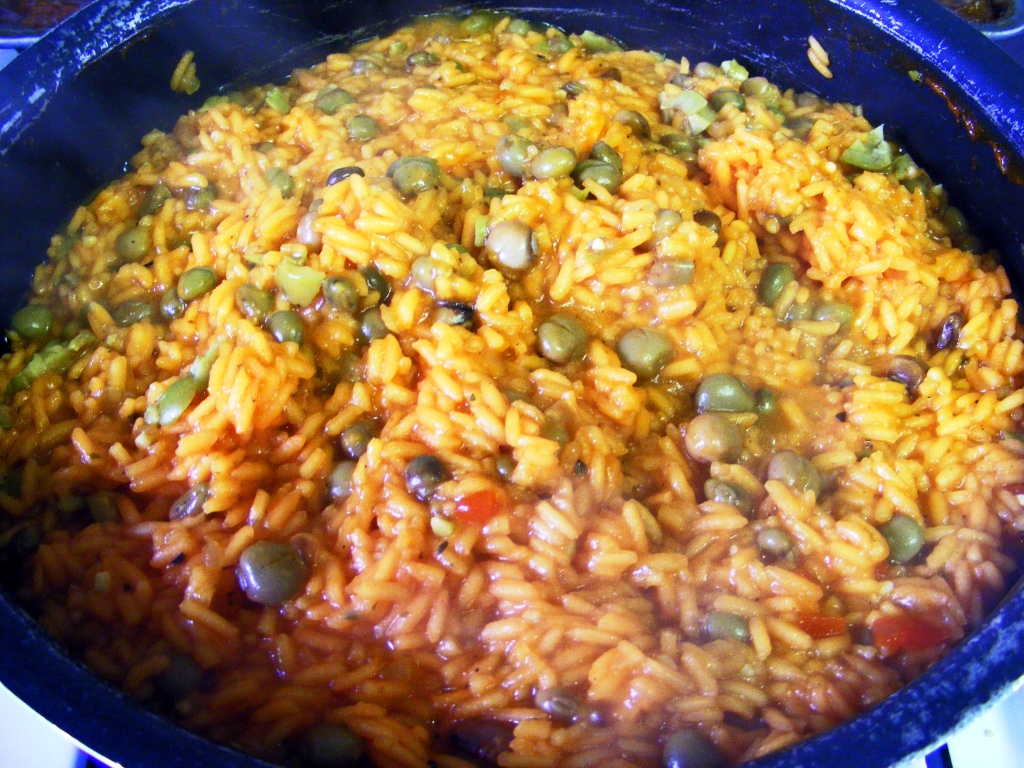|
Paseo De La Princesa
Paseo de La Princesa (Spanish for ''Promenade of the Princess'') is a pedestrian promenade in San Juan, Puerto Rico located in the city's historic district. The promenade is lined with adorned lamp posts and extends for a quarter of a mile along the southern city walls of Old San Juan. It is named after the former La Princesa Prison which is now a historic building that houses the Puerto Rico Tourism Company. The site hosts street vendors, a restaurant and magnificent views of Old San Juan and its bay. Overview The Paseo de La Princesa is often described as one of the most scenic city walkways in the world and, due to its location close to the cruise ship harbor, it is often the starting point for sightseeing in Old San Juan. The ''Raíces'' Fountain located on a plaza at the western end of the promenade is a fountain which contains sculptures that represent and celebrates the ethnic roots of the Puerto Rican identity: the European culture brought by the Spanish and other se ... [...More Info...] [...Related Items...] OR: [Wikipedia] [Google] [Baidu] |
Paseo La Princesa - Panoramio
Paseo may refer to: * a ''paseo'', a promenade, esplanade or public avenue. * ''Paseo'', a euphemism for a ride to summary execution during the White Terror during the Spanish Civil War Parkways and malls * The Paseo (Kansas City, Missouri) The Paseo (also known as Paseo Boulevard, or Paseo) is a major north–south parkway in Kansas City, Missouri. As the city's first major boulevard, it runs approximately (85 blocks) through the center of the city: from Cliff Drive and Lexington ..., a parkway in Kansas City, Missouri, U.S. * The Paseo (Pasadena), an outdoor mall in Pasadena, California, U.S. * Paseo Arts District, a commercial shopping district in Oklahoma City, U.S. * Paseo de la Reforma, wide avenue that runs diagonally across the heart of Mexico City * Paseo de Roxas, prime commercial artery in the Makati Central Business District of Metro Manila Entertainment * Paseo (film), ''Paseo'' (film), a 2018 Canadian short film * "Paseo", a song by Paradisio from ''Paradisio ( ... [...More Info...] [...Related Items...] OR: [Wikipedia] [Google] [Baidu] |
Bayamón, Puerto Rico
Bayamón (, ) is a Bayamón barrio-pueblo, city, Municipalities of Puerto Rico, municipality of Puerto Rico and suburb of San Juan, Puerto Rico, San Juan located in the northern coastal valley, north of Aguas Buenas, Puerto Rico, Aguas Buenas and Comerío, Puerto Rico, Comerío; south of Toa Baja, Puerto Rico, Toa Baja and Cataño, Puerto Rico, Cataño; west of Guaynabo, Puerto Rico, Guaynabo; and east of Toa Alta, Puerto Rico, Toa Alta and Naranjito, Puerto Rico, Naranjito. Bayamón is spread over 11 Ward (country subdivision), barrios and Bayamón barrio-pueblo, Bayamón Pueblo (the downtown area and the administrative center of the city). It is part of the San Juan-Caguas-Guaynabo Metropolitan Statistical Area and the second most populous municipality in both the metropolitan area and Puerto Rico. History The Taíno people, the indigenous peoples who encountered European explorers and settlers, were the long-time settlers in this area. The Spanish colonization of the America ... [...More Info...] [...Related Items...] OR: [Wikipedia] [Google] [Baidu] |
Fernándo Norzagaray Y Escudero
Fernando María Félix Mateo Juan Nepomuceno de Norzagaray y Escudero (19 July 1808 - 12 September 1860) was a Spanish soldier and colonial governor. Of Basque descent, he was a lieutenant general before becoming the 104th Governor of Puerto Rico and the 78th Governor of the Philippines under Spanish colonial rule. He also had a political career in Spain. In 1840 he was briefly Minister of War. On his return to Spain in 1860 he was made a senator, but he died the same year. Early life Norzagaray was born on 19 July 1808 in San Sebastián, Gipuzkoa, to military officer Fernando José Norzagaray y Casado, of Talavera de la Reina, and María Estefanía Faustina Juliana Escudero y Villanueva, of Pamplona. He was baptized on 29 July at the Basilica of Saint Mary of the Chorus, also in San Sebastián. Puerto Rico He did extensive infrastructure work in Puerto Rico. One example is the General Norzagaray Bridge, which crosses the Los Frailes stream. Arsenals were constructed, an ... [...More Info...] [...Related Items...] OR: [Wikipedia] [Google] [Baidu] |
Isabella II Of Spain
Isabella II ( es, Isabel II; 10 October 1830 – 9 April 1904), was Queen of Spain from 29 September 1833 until 30 September 1868. Shortly before her birth, the King Ferdinand VII of Spain issued a Pragmatic Sanction to ensure the succession of his firstborn daughter, due to his lack of a son. She came to the throne a month before her third birthday, but her succession was disputed by her uncle the Infante Carlos (founder of the Carlist movement), whose refusal to recognize a female sovereign led to the Carlist Wars. Under the regency of her mother, Spain transitioned from an absolute monarchy to a constitutional monarchy, adopting the Royal Statute of 1834 and Constitution of 1837. Her effective reign was a period marked by palace intrigues, back-stairs and antechamber influences, barracks conspiracies, and military '' pronunciamientos''. She was deposed in the Glorious Revolution of 1868, and formally abdicated in 1870. Her son, Alfonso XII, became king in 1874. Bi ... [...More Info...] [...Related Items...] OR: [Wikipedia] [Google] [Baidu] |
1898 Promenade San Juan Porto Rico
Events January–March * January 1 – New York City annexes land from surrounding counties, creating the City of Greater New York as the world's second largest. The city is geographically divided into five boroughs: Manhattan, Brooklyn, Queens, The Bronx and Staten Island. * January 13 – Novelist Émile Zola's open letter to the President of the French Republic on the Dreyfus affair, ''J'Accuse…!'', is published on the front page of the Paris daily newspaper ''L'Aurore'', accusing the government of wrongfully imprisoning Alfred Dreyfus and of antisemitism. * February 12 – The automobile belonging to Henry Lindfield of Brighton rolls out of control down a hill in Purley, London, England, and hits a tree; thus he becomes the world's first fatality from an automobile accident on a public highway. * February 15 – Spanish–American War: The USS Maine (ACR-1), USS ''Maine'' explodes and sinks in Havana Harbor, Cuba, for reasons never fully establish ... [...More Info...] [...Related Items...] OR: [Wikipedia] [Google] [Baidu] |
Salsa (dance)
Salsa is a latin dance, associated with the music genre of the same name, which was first popularized in the United States in the 1960s in New York City. Salsa is an amalgamation of Cuban dances, such as mambo, pachanga and rumba, as well as American dances such as swing and tap. Origin Salsa dancing — as a dance to accompany salsa music — was popularized in the 1960s. It was primarily developed by Puerto Ricans and Cubans living in New York in the late 1960s and early 1970s. Different regions of Latin America and the United States (including countries in the Caribbean) have distinct salsa styles, such as Cuban, Puerto Rican, Colombian, and New York styles. Salsa dance socials are commonly held in nightclubs, bars, ballrooms, restaurants, and outside, especially when part of an outdoor festival. Some debate exists about the exact origins of the name "salsa". Some claim it originated from something musicians shouted while playing to generate excitement. The term was popu ... [...More Info...] [...Related Items...] OR: [Wikipedia] [Google] [Baidu] |
Salsa Music
Salsa music is a style of Latin American music. Because most of the basic musical components predate the labeling of salsa, there have been many controversies regarding its origin. Most songs considered as salsa are primarily based on son montuno, with elements of Mambo (music), mambo, Latin jazz, Bomba (Puerto Rico), bomba, plena and guaracha. All of these elements are adapted to fit the basic son montuno template when performed within the context of salsa. Originally the name salsa was used to label commercially several styles of Latin dance music, but nowadays it is considered a musical style on its own and one of the staples of Latin American culture. The first self-identified salsa bands were predominantly assembled by Cubans, Cuban and Puerto Ricans, Puerto Rican musicians in New York City in the '70s. The music style was based on the late son montuno of Arsenio Rodríguez, Conjunto Chappottín and Roberto Faz. These musicians included Celia Cruz, Willie ColónRuben Blade ... [...More Info...] [...Related Items...] OR: [Wikipedia] [Google] [Baidu] |
Jazz
Jazz is a music genre that originated in the African-American communities of New Orleans, Louisiana in the late 19th and early 20th centuries, with its roots in blues and ragtime. Since the 1920s Jazz Age, it has been recognized as a major form of musical expression in traditional and popular music. Jazz is characterized by swing and blue notes, complex chords, call and response vocals, polyrhythms and improvisation. Jazz has roots in European harmony and African rhythmic rituals. As jazz spread around the world, it drew on national, regional, and local musical cultures, which gave rise to different styles. New Orleans jazz began in the early 1910s, combining earlier brass band marches, French quadrilles, biguine, ragtime and blues with collective polyphonic improvisation. But jazz did not begin as a single musical tradition in New Orleans or elsewhere. In the 1930s, arranged dance-oriented swing big bands, Kansas City jazz (a hard-swinging, bluesy, improvisationa ... [...More Info...] [...Related Items...] OR: [Wikipedia] [Google] [Baidu] |
Fried Plantain
Fried plantain is a dish cooked wherever plantains grow, from West Africa to East Africa as well as Central America, the tropical region of northern South America and the Caribbean countries like Haiti to Cuba and in many parts of Southeast Asia, where fried snacks are widely popular. In Indonesia it is called ''gorengan''. It is called ''alloco'' in Côte d'Ivoire and ''dodo'' in Western Nigeria, otherwise known as simply fried plantain in other parts of Nigeria. ''Kelewele'' is a fried spicy plantain or can be fried as a side dish for Red Red (African stewed black-eyed peas) and fish stew in Ghana. Fried plantain is also eaten in some countries in South America or the Caribbean where African influence is present. For example, in the Dominican Republic, Cuba and Puerto Rico, it is common to cut plantains in slices, fry them until they are yellow, smash them between two plates and fry them again. This is also a common dish in Haiti, referred to as ''bannann peze'', and througho ... [...More Info...] [...Related Items...] OR: [Wikipedia] [Google] [Baidu] |
Piña Colada
The piña colada (; es, piña , "pineapple", and , "strained") is a cocktail made with rum, cream of coconut or coconut milk, and pineapple juice, usually served either blended or shaken with ice. It may be garnished with either a pineapple wedge, maraschino cherry, or both. There are two versions of the drink, both originating in Puerto Rico. Etymology The name ''piña colada'' (Spanish) literally means "strained pineapple", a reference to the freshly pressed and strained pineapple juice used in the drink's preparation. History The earliest known story states that in the 19th century, Puerto Rican pirate Roberto Cofresí, to boost his crew's morale, gave them a beverage or cocktail that contained coconut, pineapple and white rum. This was what would be later known as the famous piña colada. With his death in 1825, the recipe for the piña colada was lost. Historian Haydée Reichard disputes this version of the story. In 1950, ''The New York Times'' reported that "Drin ... [...More Info...] [...Related Items...] OR: [Wikipedia] [Google] [Baidu] |
Piragua (food)
A piragua is a Puerto Rican shaved ice dessert, shaped like a cone, consisting of shaved ice and covered with fruit-flavored syrup. Piraguas are sold by vendors, known as , from small, traditionally brightly-colored pushcarts offering a variety of flavors. Besides Puerto Rico, piraguas can be found in mainland areas of the United States with large Puerto Rican communities, such as New York and Central Florida. Definition In Puerto Rico, the word refers to a frozen treat made of shaved ice and covered with fruit-flavored syrup. Unlike the American snow cone which is round and resembles a snowball, the piragua is pointy and shaped like a pyramid. The word ''piragua'' is derived from the combination of the Spanish words ('pyramid') and ('water'). In Latin America, frozen treats similar to the piragua are known by many different names. Preparation and sale Piragüeros A piragua vendor is known as a . Most piragüeros sell their product from a colorful wooden pushcart that car ... [...More Info...] [...Related Items...] OR: [Wikipedia] [Google] [Baidu] |
Puerto Rican Cuisine
Puerto Rican cuisine has its roots in the cooking traditions and practices of Europe (mostly Spain), Africa and the native Taínos. History Puerto Rican cuisine has been influenced by an array of cultures including Taino Arawak, Spanish, and African. Although Puerto Rican cooking is somewhat similar to both Spanish and other Latin American cuisine, it reflects a unique blend of influences, using indigenous seasonings and ingredients. Locals call their cuisine ''cocina criolla''. By the end of the nineteenth century, the traditional Puerto Rican cuisine was well established. By 1848 the first restaurant, La Mallorquina, opened in Old San Juan. ''El Cocinero Puerto-Riqueño o Formulario'', the island's first cookbook, was published in 1849. Taíno influence ''See: Native American cuisine'' From the diet of the Taíno (culturally related with the Maya and Carib peoples of Central America and the Caribbean) and Arawak people come many tropical roots and tubers (collectively ... [...More Info...] [...Related Items...] OR: [Wikipedia] [Google] [Baidu] |







